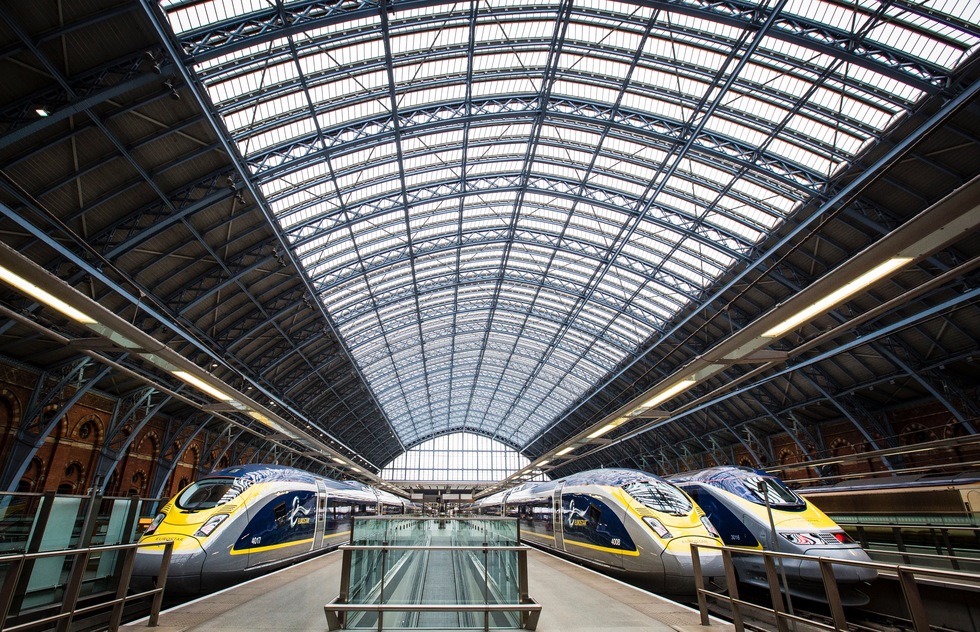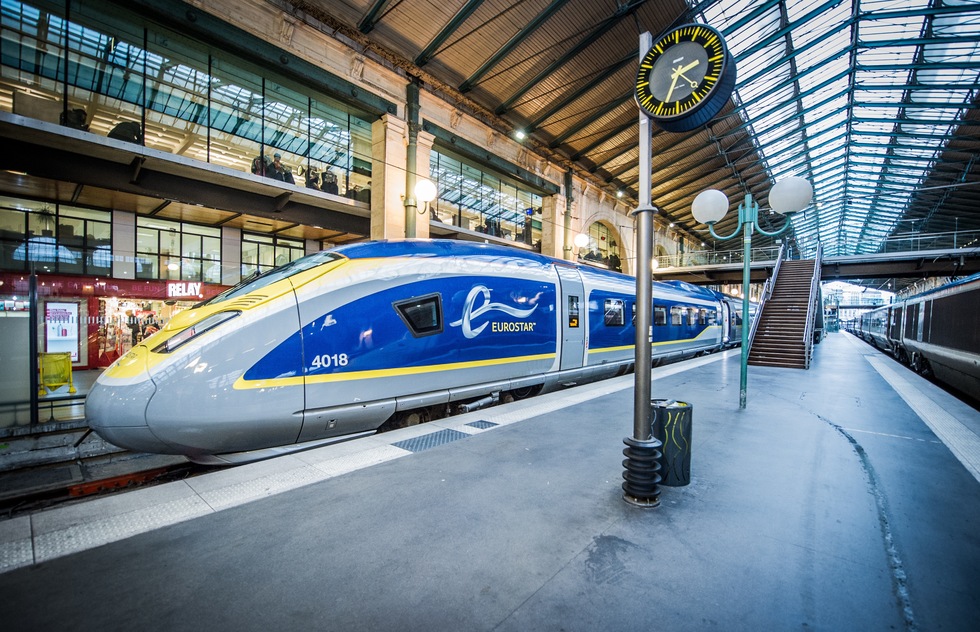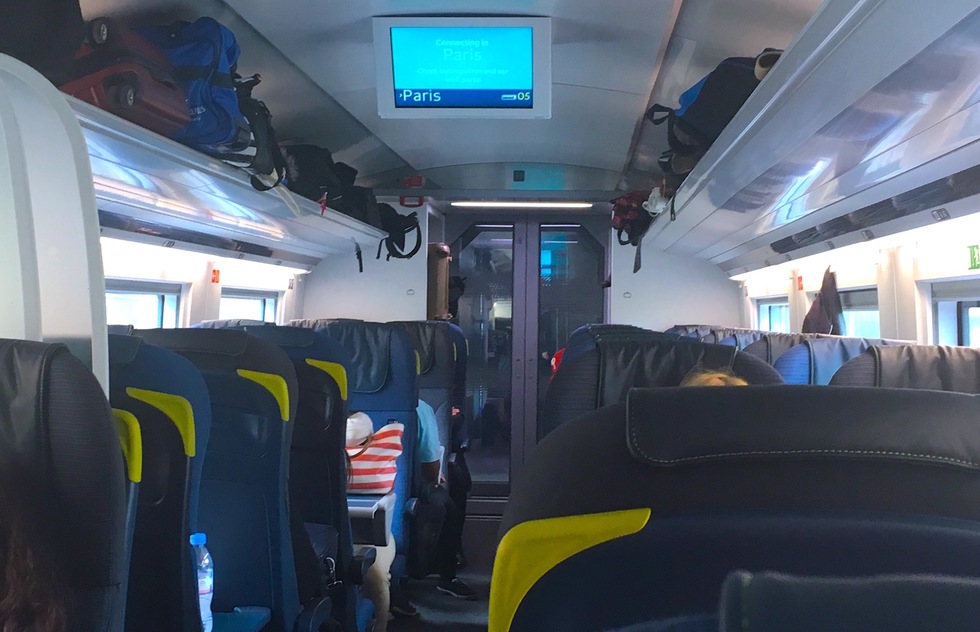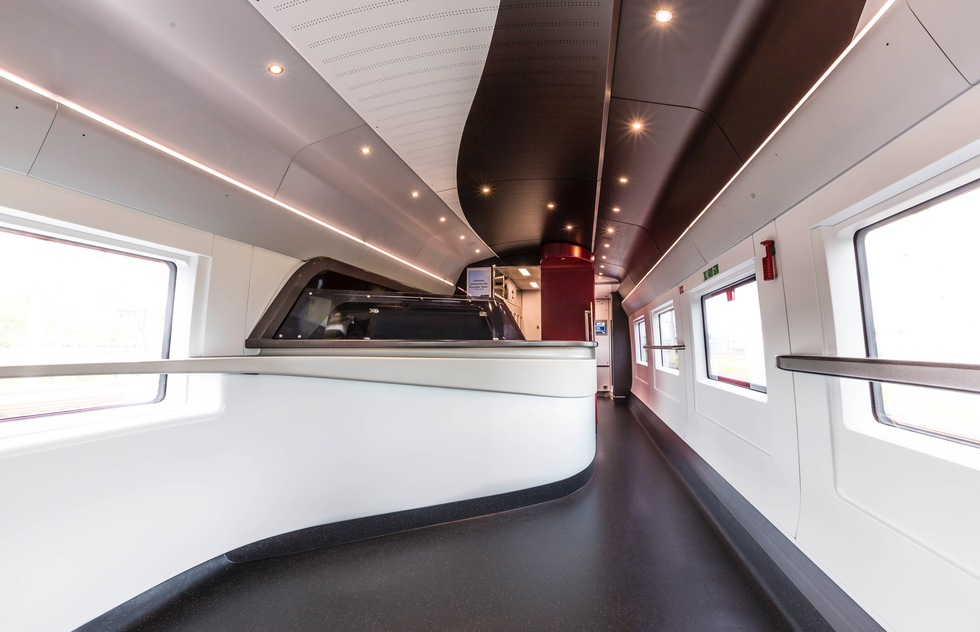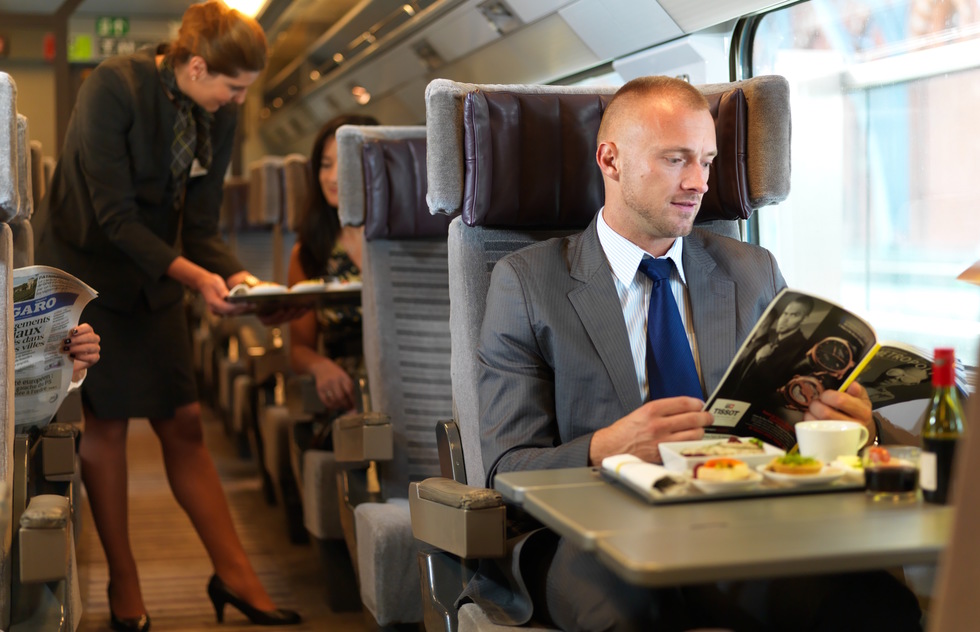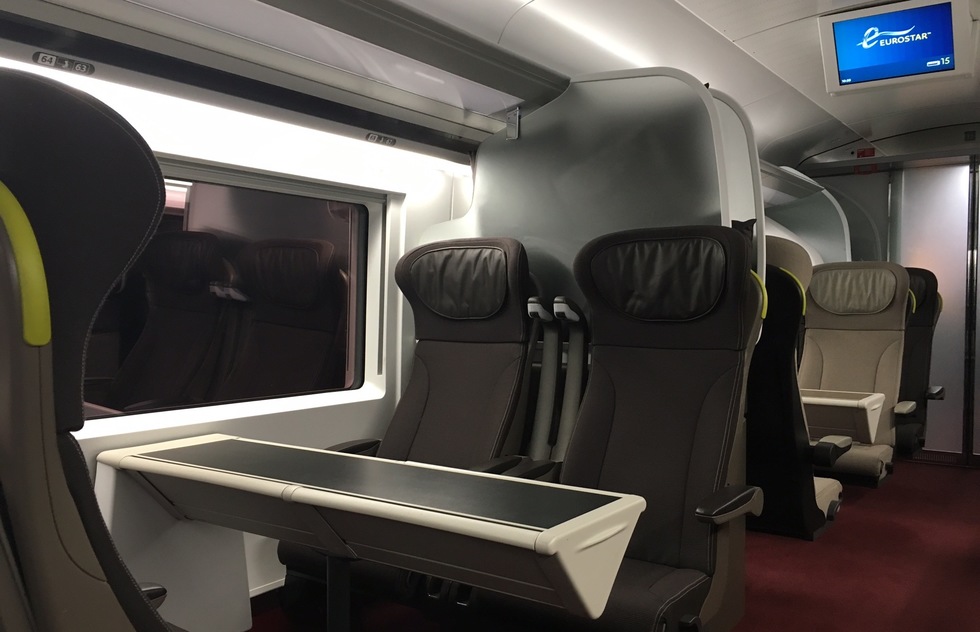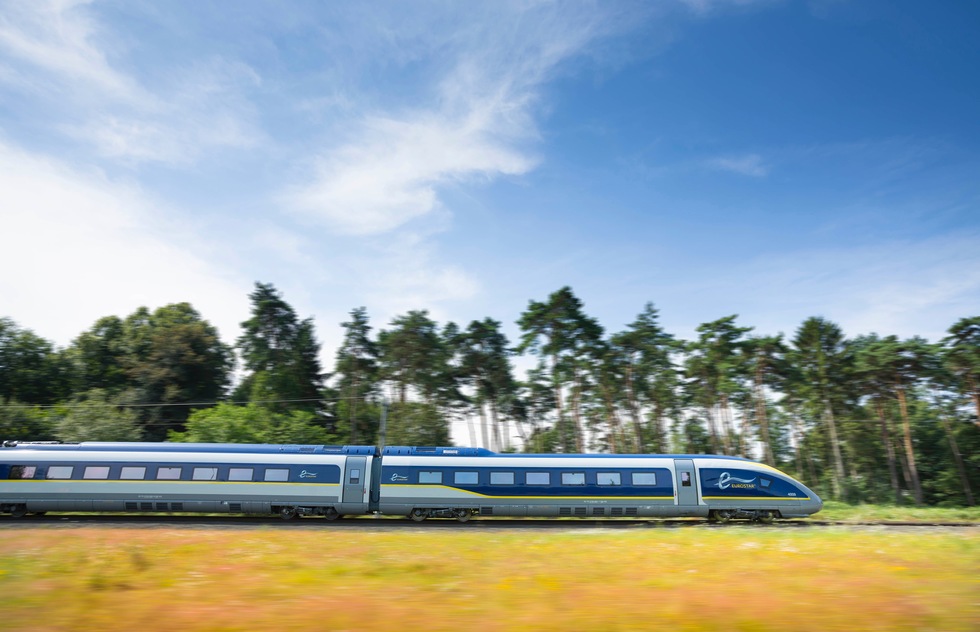What the Upgraded Eurostar Channel Tunnel Train is Like
By Jason Cochran
The trains that race through the Channel Tunnel between England and Europe are being replaced for the first time since their debut in 1994. Thanks to upgrades to the rails, a trip between London (pictured) and Paris that once required over three hours now takes just two hours and 15 minutes (and Brussels in two hours)—and Eurostar is in the process of changing over its train cars, too. Here's what Eurostar's service is like now.
Smaller locomotives
One of the biggest changes of the trains, called e320s, is the size of the engine car. It used to take up the entire front carriage but newer technology shrunk the cab, which now allows for seating behind it. The result: Trains have more seats—750 versus 900. That fact, plus competition from low-cost airlines, has driven advance-purchase prices down to around £29 (USD $42) each way when they recently cost £10 or £15 more than that.
Stations
Security is tight on either end, although passengers who spring for a higher class of service also buy the right to zip through security with as little as 10 minutes to spare. That can make a trip between the two cities an hour quicker than it would take if you had to go to the airport. If you have to wait around before your train, not all stations are equal. London's St. Pancras International is newly renovated, full of shops, and a dream, while the waiting space above Paris' Gare du Nord (pictured) is a cramped, clinical space with overpriced food and beverage. Still, although a trip through the Chunnel is not the thrill it was in 1995, Eurostar is now firmly established as a quick, easy, and remarkably affordable alternative to flying.
Standard class
Here's the glamour shot of Standard Class (which is the economy class) provided by Eurostar. It's neat but not as cushy and cozy as the original design. But what does it look like when it's full?
Standard Class
And here's Standard Class in actual service. It's comfortable, but there are drawbacks: There's not enough baggage storage, so if you have luggage that won't fit overhead you must try to be among the first on board to grab a spot in the luggage racks by the vestibule. Also, although there are now power outlets at seats—and it's about time—they're awkwardly located underneath the shared armrests where you can't see them, so you have to feel your way around until you find them. Remember to bring a plug adapter, either British or European, if you want to be able to use them at all. (In Business and Premier classes, there's a USB outlet within easy reach at each seat.)
Streaming movies
Before you get on board, download Eurostar's app—you can't do it once you arrive. It will allow you to stream a changing menu of movies and TV shows for free. Two hours isn't a lot of time to get anything in, and the views out the window are interesting enough for first-timers, but it's a nice feature.
Wi-Fi
There's also free Wi-Fi on board, but don't rely on it. It's nearly impossible to access for long for technical reasons having to do with ground-based connectivity issues. The streaming entertainment comes from on-train computers, so that never cuts out, but if you try to reach the world outside your window, you may encounter this error message.
Café Métropole
Standard tickets don't come with a meal. Yes, there's still a bar car with beer, wine and other snacks. It's called Café Métropole, and thanks to the new design, it's sleek because it was a chance for Italian design house Pininfarina to flex its muscles.
Business Class meal
The higher-class tickets, Standard Premier and Business, are served light meals—but again, since most Eurostar journeys are around two hours, there's barely time to eat. By the same measure, you could argue that given the short trips it's barely worth it to buy a Business ticket at all. You'll find most of the passengers in Eurostar's upper classes are not tourists but people who regularly make this trip for work.
Standard Premier
In between Standard and Business is a category called Standard Premier, shown here as the train goes through the Channel Tunnel, or "Chunnel," hence the blank view. It offers more space than Standard, a small meal, and a USB charging port.
Eurostar services
Eurostar is gradually introducing the new trains, so for the next few years you can't be sure during booking whether you'll ride the old ones, with their brown-and-beige interiors, or the new ones.
Eurostar's most popular route is London–Paris, but London–Brussels is also popular, as is London–Disneyland Paris. It also dips down to the south of France via Lyon, Avignon, and Marseille. One of the most recent additions is service between Lille, in northeast France, to Geneva, Switzerland. In winter, it goes to a few resort destinations in the French and Swiss Alps. By the end of 2016, it will finally go to Antwerp, Rotterdam, and Amsterdam from Brussels. The introduction of the e320, which unlike the previous trains conforms to the demands of all Europe's high-speed train specifications, means Eurostar can start adding new cities at a faster clip.
The principal Web portal is www.eurostar.com, but for Americans, its sales agent is Rail Europe at www.raileurope.com.
Eurostar's most popular route is London–Paris, but London–Brussels is also popular, as is London–Disneyland Paris. It also dips down to the south of France via Lyon, Avignon, and Marseille. One of the most recent additions is service between Lille, in northeast France, to Geneva, Switzerland. In winter, it goes to a few resort destinations in the French and Swiss Alps. By the end of 2016, it will finally go to Antwerp, Rotterdam, and Amsterdam from Brussels. The introduction of the e320, which unlike the previous trains conforms to the demands of all Europe's high-speed train specifications, means Eurostar can start adding new cities at a faster clip.
The principal Web portal is www.eurostar.com, but for Americans, its sales agent is Rail Europe at www.raileurope.com.





